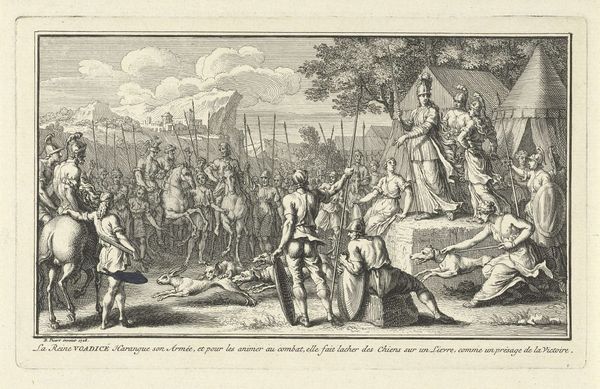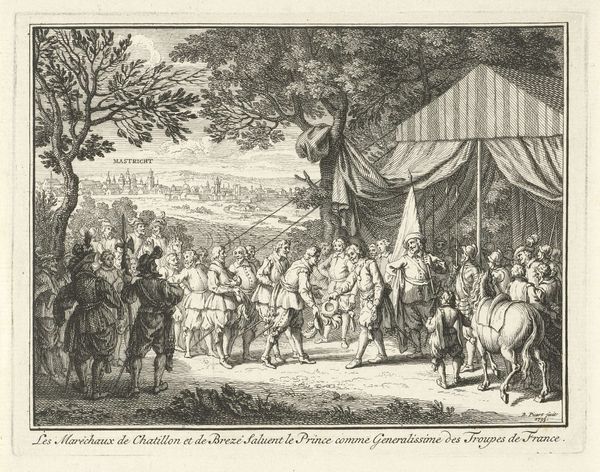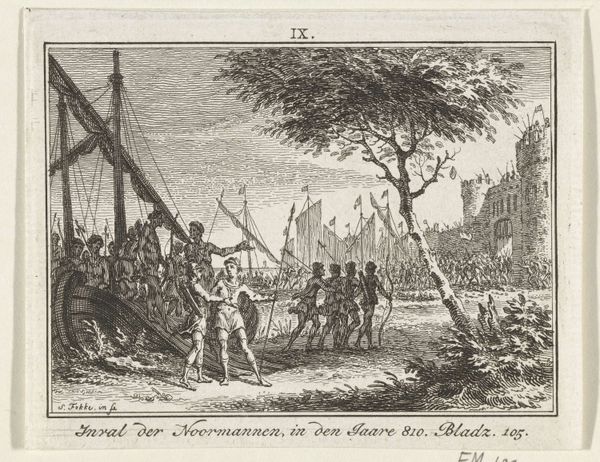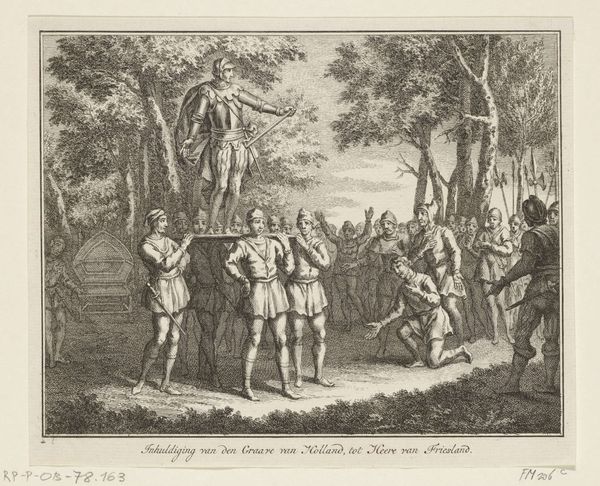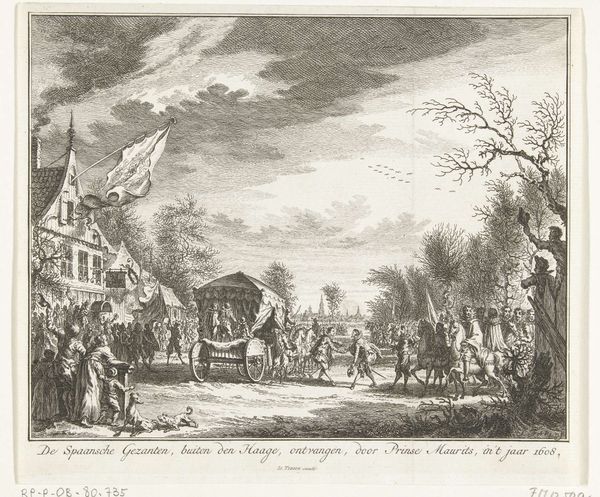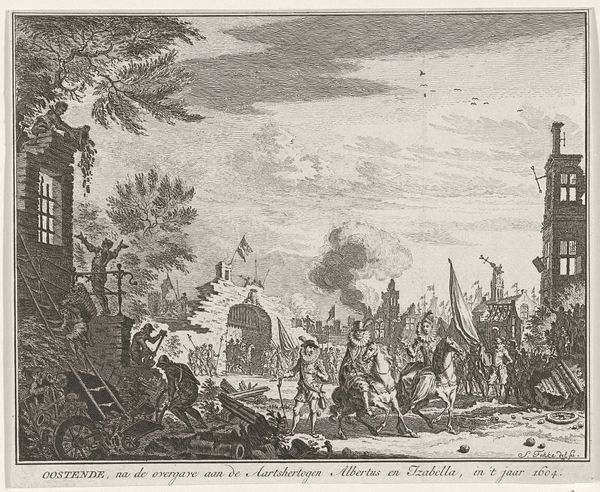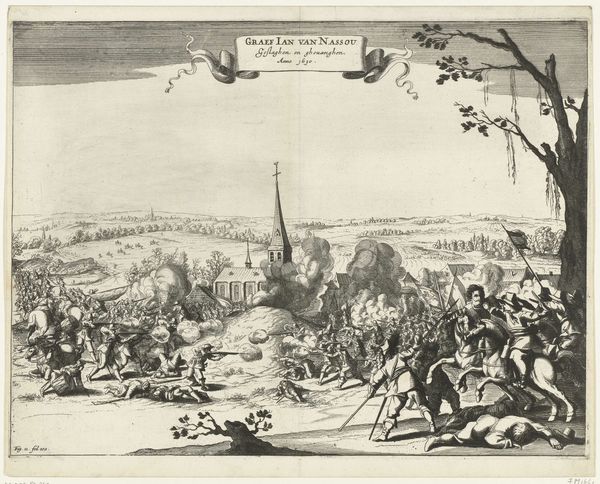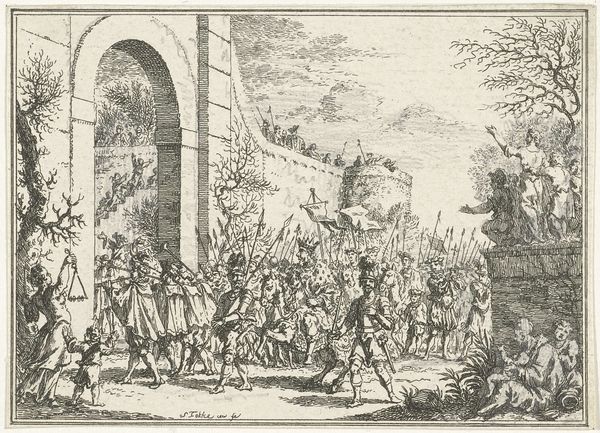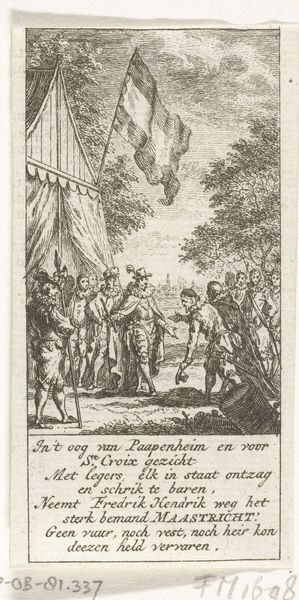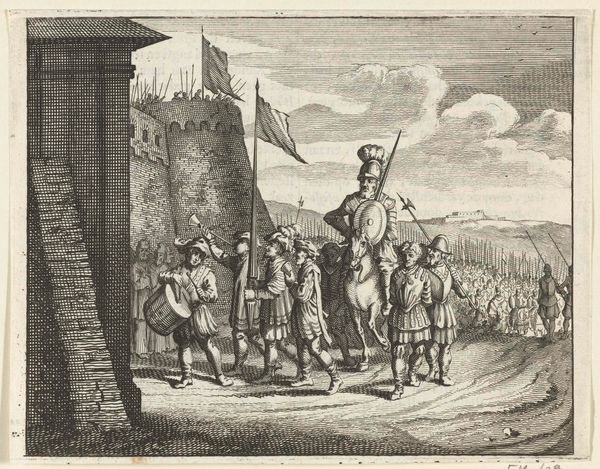
Hartbert, bisschop van Utrecht, dreigt Dirk VI met de ban, 1146 1722 - 1750
0:00
0:00
print, pen, engraving
#
baroque
#
pen drawing
#
mechanical pen drawing
# print
#
pen illustration
#
pen sketch
#
old engraving style
#
pen
#
history-painting
#
engraving
Dimensions: height 89 mm, width 109 mm
Copyright: Rijks Museum: Open Domain
Curator: Here we have "Hartbert, bisschop van Utrecht, dreigt Dirk VI met de ban, 1146," an engraving by Simon Fokke, created sometime between 1722 and 1750. Editor: My initial reaction is one of contained drama. Despite the delicate lines of the engraving, the composition—divided between the bishop’s procession and the tense encampment—creates a palpable sense of conflict. Curator: Indeed. The engraving technique, executed with precise lines, constructs two distinct visual fields. On one side, the bishop leads a solemn procession toward the besieging army; on the other, we observe the military camp and soldiers seemingly reacting to the approaching ecclesiastical threat. Note the directionality created by lines: parallel marching contrasted by criss-crossed shading suggesting chaos and disruption among the armed figures. Editor: It’s fascinating how Fokke situates this historical confrontation. We must recognize this is a very specific depiction of power dynamics during a time when religious authority held immense sway over secular rulers. The act of excommunication wasn’t just a spiritual matter; it had real political and social consequences. Imagine the message this image sends – a prelate willing to confront military might to uphold the Church's authority. Curator: From a formalist perspective, observe the economy of detail. The artist achieves a remarkable depth using simple hatching and cross-hatching. Light and shadow play a crucial role in defining the forms. Observe the way light models the figures, emphasizing the contrast between the illuminated bishop and the more shadowy soldiers. It’s a lesson in visual rhetoric using basic graphic tools. Editor: Absolutely, but let’s consider what’s left out, too. The perspective privileges the Bishop and frames the military camp, drawing them to face forward, together. Fokke offers commentary, a justification. I see more here than artistic interpretation, I also see propagandist framing. Who ordered this image and what ends was it meant to achieve? These lines give rise to countless inquiries about history, authority, and resistance. Curator: A point well taken. Even in the formal austerity of its engraving technique, there is much more to discuss in terms of broader cultural and historical implications. Editor: I agree. Analyzing it in these intertwined layers makes experiencing the artwork feel especially illuminating and worthwhile.
Comments
No comments
Be the first to comment and join the conversation on the ultimate creative platform.
